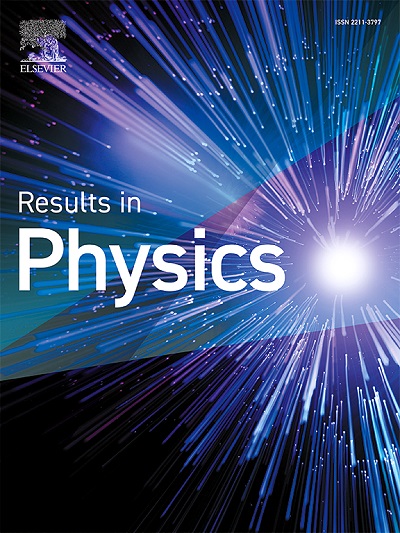Optimization using RSM-CCD in the fabrication of magnesium-doped bismuth ferrite nanoparticles via sol–gel auto-combustion method for enhanced photocatalytic performance
IF 4.4
2区 物理与天体物理
Q2 MATERIALS SCIENCE, MULTIDISCIPLINARY
引用次数: 0
Abstract
Magnesium-doped bismuth ferrite (BiFeO3 or BFO) nanoparticles were fabricated through the sol–gel auto-combustion method to increase their photocatalytic performance. The synthesis parameters, specifically annealing temperature (400, 500, and 600°C) and Mg doping concentration (5, 10, 15, 20, and 25 %), were varied to investigate their effects on the photocatalytic degradation of Rhodamine B under simulated solar irradiation. The nanoparticles were then characterized using different analytical techniques to assess their structural, optical, and morphological properties. X-ray diffraction (XRD) results found that the existence of high intensity cubic sillenite phase, Bi25FeO40 as a secondary phase in 25 % Mg-doped bismuth ferrite nanoparticles with a crystallite size of 33.9 nm, which would enhance the photocatalytic performance. Besides, the vibrating sample magnetometer (VSM) analysis showed that the doping of Mg in the bismuth ferrite host structure significantly enhances superparamagnetic and soft ferromagnetic behavior as the dopant concentration increases from 5 to 25 % due to increase in saturation magnetization (from 2.28 emu/g to 6.19 emu/g) and reduction in coercivity (from 88.35 Oe to 49.81 Oe). Field emission scanning electron microscopy-energy dispersive X-ray spectroscopy (FESEM-EDX) micrograph shows the particles were fully crystallized with regular shapes, suggesting a uniform surface morphology. Ultraviolet–visible diffuse reflectance spectroscopy (UV–Vis DRS) found that the band gap narrows to 2.0 eV when introducing Mg doping. Based on the photocatalytic degradation activity of Rhodamine B using Mg-doped bismuth ferrite nanoparticle (annealing temperature of 600 °C, 25 % Mg concentration) successfully achieved 80 % at 60 min, which was verified using response surface methodology (RSM)-central composite design (CCD). The photodegradation reaction followed pseudo-first-order kinetics, with the rate constant for the 25 % Mg-doped bismuth ferrite nanoparticles determined to be 0.02699 min−1.
求助全文
约1分钟内获得全文
求助全文
来源期刊

Results in Physics
MATERIALS SCIENCE, MULTIDISCIPLINARYPHYSIC-PHYSICS, MULTIDISCIPLINARY
CiteScore
8.70
自引率
9.40%
发文量
754
审稿时长
50 days
期刊介绍:
Results in Physics is an open access journal offering authors the opportunity to publish in all fundamental and interdisciplinary areas of physics, materials science, and applied physics. Papers of a theoretical, computational, and experimental nature are all welcome. Results in Physics accepts papers that are scientifically sound, technically correct and provide valuable new knowledge to the physics community. Topics such as three-dimensional flow and magnetohydrodynamics are not within the scope of Results in Physics.
Results in Physics welcomes three types of papers:
1. Full research papers
2. Microarticles: very short papers, no longer than two pages. They may consist of a single, but well-described piece of information, such as:
- Data and/or a plot plus a description
- Description of a new method or instrumentation
- Negative results
- Concept or design study
3. Letters to the Editor: Letters discussing a recent article published in Results in Physics are welcome. These are objective, constructive, or educational critiques of papers published in Results in Physics. Accepted letters will be sent to the author of the original paper for a response. Each letter and response is published together. Letters should be received within 8 weeks of the article''s publication. They should not exceed 750 words of text and 10 references.
 求助内容:
求助内容: 应助结果提醒方式:
应助结果提醒方式:


